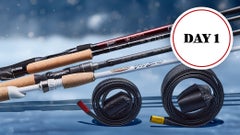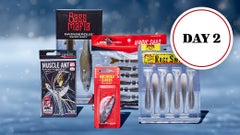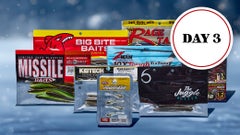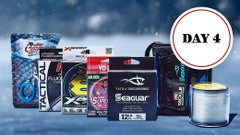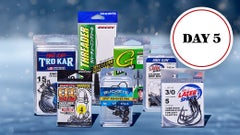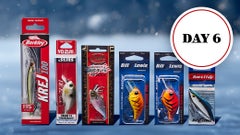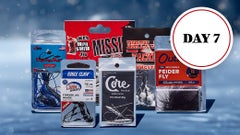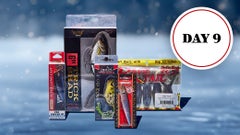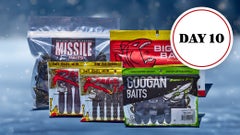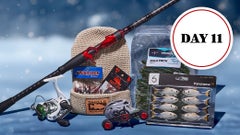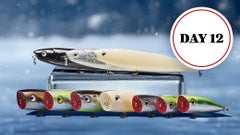Post-Spawn Fluke Patterns & Techniques
After bass have spawned there are few baits that match the versatility, erratic action, and flat-out fish catching ability of the Fluke. During the Post-Spawn the slow fluttering and gliding action of a fluke is highly effective at provoking fry guarding bass, as well as, imitating spawning or dying shad. The Fluke fishes much like a Jerkbait, but excels in areas where treble hooks would normally foul. Target shallow bushes, grass lines, trees, wood, or anywhere you think a spawning fish might take cover. Beyond its weedless capabilities, the Fluke mimics all kinds of forage. It is a non-obtrusive and stealthy offering that will definitely help you get more bites.
Rods:
A Fluke is typically fished weightless, so you want to choose a rod with a light enough tip to cast very little weight, but also with plenty of backbone to drive and set the hook. Any all-purpose casting rod in the 7’ – 7’3” range with a Medium to Medium Heavy power that you would typically use for a Texas-rig or senko will work great for fishing the Fluke. Fast tapered rods will help load the rod tip so you can cast and skip a weightless Fluke with better accuracy.
Reels:
A faster gear ratio will help you manage line and keep up with the Fluke as it glides from side-to-side back to the boat. The Fluke shines when fished in shallow water, so try using a reel with at least a 7:1 gear ratio to avoid constantly snagging the bottom. Often your bites will come when you are working the bait on a slack line, so using a high-speed gear ratio will also allow you to get the line tight quickly so you can set the hook. Most anglers prefer a smaller casting reel in the 100- to 150-size range for better handling, however you may need to step up to a 200-size to get adequate line capacity with larger diameter fishing lines.
Line:
Any time your line is coming through the water column, it is never a bad idea to disguise your presentation with the translucent qualities of fluorocarbon. The sinking nature of fluorocarbon will also keep the Fluke down when you are trying to fish deeper in the water column. If water clarity is less of a concern and you are fishing very shallow, monofilament line will provide the lift needed to fish in extremely shallow water. Your line size will always be dictated by the thickness of cover you are fishing, but try using line in the 10-15lb test range, with 12lb being a good starting point and up to 20lb when fishing around heavy cover.
Modifications & Rigging:
To reduce snagging when fishing in shallow water areas, keep your presentation weedless by Texas-rigging your Fluke on an extra wide gap hook. Varying the gauge of your hook will help you dial in the correct depth and action. Light wire EWG hooks in shallow water offer better lift, while a heavier gauge superline EWG will add weight and help the Fluke sink. In open water situations nose-hooking the Fluke with your favorite drop shot hook can often provide better hook-up ratios. Before you rig the hook through the plastic, twist a CPS spring into the nose and rig your hook through the wire so that it holds firmly in place. For better castability and faster sinking rates insert nail weights into the head or belly section of the Fluke.
Tips & Tricks:
You can think of the Fluke as a soft-plastic version of a Jerkbait but without treble hooks. With no exposed hook points the Fluke provides the versatility to be fished around grass, brush, and other heavy cover without getting hung up. Fish the Fluke with a similar twitch, twitch, pause retrieve much like a Jerkbait, and vary your cadence throughout the day to match the attitude of the fish. If you find the fish are short striking or you are fishing an area with very little cover, improve your hook up ratio by using some pliers to open up the gap and expose more of the hook point.
Colors:
Flukes are mainly used to imitate spawning or dying baitfish, so for the most part you can stick with White, Pearl, or Shad patterns to keep your presentation natural. During the later Spring months bluegills and panfish move shallow to spawn and often become the primary forage of hungry Post-Spawn bass, so try using Green Pumpkin or Watermelon variations to better mimic these fish. If there is copious amounts of forage present and the fish refuse to bite natural colors, there are times when using a bright shock color like Chartreuse or Pink can make all the difference.














































































